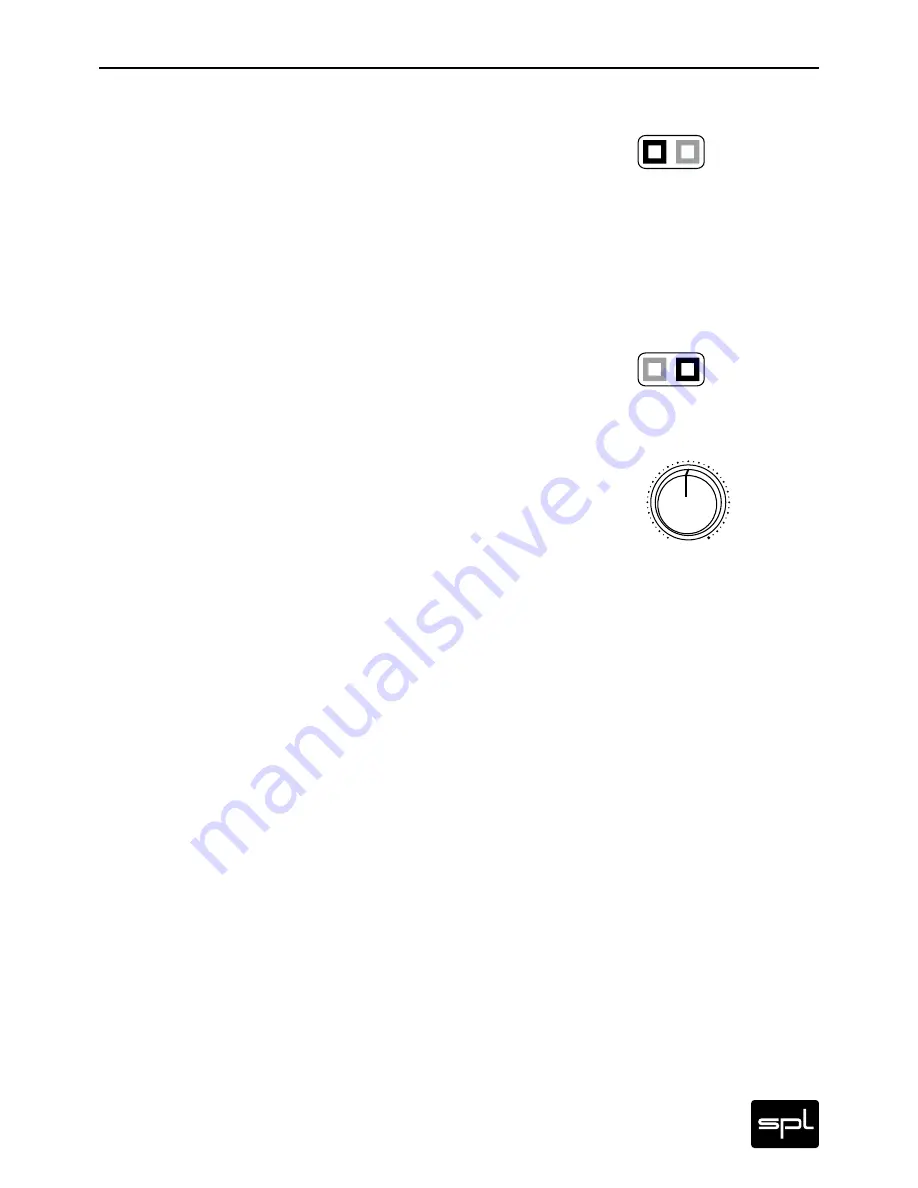
13
M/S Master
Control Elements
MID section
MID:
INSERT
Use the INSERT switch to activate the insert point for the Mid channel. You can connect any
mono processor, or a single channel of a stereo unit, to the insert jacks on the rear panel.
As soon as you engage the INSERT switch, the connected units are integrated into the M/S
Master processing path. To use the processors independently of the M/S Master, as well as
for mono or L/R processing, disengage the ACTIVE switch of the M/S Master.
Refer to the information on „Input and Output Electronics“ and „MID INSERT, SIDE INSERT“ on
page 9 and „ACTIVE“ on page 11.
For more information on how to use external processors go to „Working with External
Processors“ on page 18.
MID:
MUTE
The MUTE push button silences the Mid signal. There is another MUTE button for the SIDE
section. When you isolate either channel from the other, you can actually concentrate better
and gain a more focused perspective on the audio material of that particular channel. The
relation between the mixed elements is easier to distinguish and, at the same time, overpro-
cessing becomes much more evident. Focused processing is also made easier and the control
over previous work becomes very revealing.
LEVEL
Use the LEVEL control to set the Mid signal volume in relation to the Side signal. The start
position is set hard right. The more you turn the control to the left, the more the volume decre-
ases. When turned fully left, the Mid signal disappears completely.
Together with the STEREO WIDTH control in the SIDE section, the LEVEL control determines
the ratio between both channels. Understanding the interdependence of these controls is
essential when working with them. Thus, you should always ponder if it is more appropriate
to decrease one or increase the other. For example: to expand the stereo image without losing
mono compatibility, the most convenient would be to increase the STEREO WIDTH to positive
values. On the contrary, if you were to decrease the LEVEL of the (Mono) Mid signal without
changing the STEREO WIDTH value, mono compatibility would also be affected. Typical appli-
cation examples include the need to emphasize or attenuate elements in the Mid signal, with
the intention of modifying the depth of elements (like the vocals) placed at the front or back of
a mix, or even to alter the relation between Mid and Side elements.
In this last case, and as described above, the LEVEL and STEREO WIDTH controls provide optimal
conditions to make delicate adjustments. When it comes to localization, as in the first case, it is
interesting to know that the depth of a signal is strongly influenced by high-frequency, mono-
phonic differences, which are then shaped by the ear. Sounds above 1.5 kHz coming from in front
of the receiver are more intensely reflected by the ear and are responsible for a good directivity.
Given this, processing the relevant frequency range in the Mid signal with an EQ connected to the
MID INSERT can help modify positioning. Signal presence is intensified by emphasizing frequen-
cies between 1.5 kHz and 2 kHz, which results in a small increase in the overall level.
Dynamic differences throughout the audio material are one of the most common situations
that require correcting. For example, the level of vocals usually changes when the song goes
from the verse to a chorus, so it might be necessary to control the dynamics. The high quality
of the potentiometers is evident on their perfectly adjusted torque – dynamic adjustments
are thus much more carefully controlled.
INSERT
MUTE
Mid
INSERT
MUTE
Mid
LEVEL
0
0.1
0
.2
0
.3
0
.4
0.5 0.6
0
.7
0.8
0
.9
1
Summary of Contents for M/S Master 1020
Page 22: ...Manual M S Master Model 1020...






















